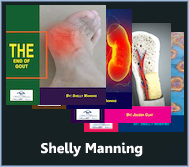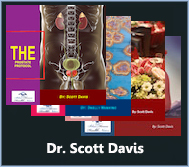What is the difference between a headache and a migraine?
A headache and a migraine are both forms of head pain, but they differ in several ways:
- Intensity and Duration:
- Headaches are typically milder and shorter in duration compared to migraines. Headaches can last from 30 minutes to several hours.
- Migraines are often severe and can last for hours to days if untreated.
- Symptoms:
- Headaches usually involve dull, steady pain on both sides of the head. They may be accompanied by sensitivity to light or noise.
- Migraines often involve throbbing or pulsating pain, usually on one side of the head. Migraines are often accompanied by other symptoms such as nausea, vomiting, and sensitivity to light, sound, or smells.
- Triggers:
- Headaches can be triggered by various factors such as stress, dehydration, lack of sleep, or muscle tension.
- Migraines can also be triggered by similar factors, but they often have specific triggers like hormonal changes, certain foods or drinks, weather changes, or sensory stimuli.
- Impact on Daily Life:
- Headaches may cause discomfort but often do not significantly impair daily activities.
- Migraines can be debilitating, often causing people to miss work or other activities due to the severity of symptoms.
- Underlying Mechanisms:
- Headaches can occur due to tension in the muscles, sinus congestion, or other factors.
- Migraines involve complex neurological processes, including changes in brain chemistry, blood flow, and nerve activity.
- Treatment:
- Headaches can often be managed with over-the-counter pain relievers, rest, hydration, and stress management techniques.
- Migraines may require prescription medications specifically designed to treat migraines, such as triptans or preventive medications. Lifestyle changes and identifying triggers are also important for managing migraines.
Overall, while both headaches and migraines involve head pain, migraines are typically more severe and accompanied by additional symptoms, making them more debilitating and requiring specific treatment approaches.
What is the difference between a migraine and a sinus headache?
Migraines and sinus headaches can both cause head pain, but they have different underlying causes and symptoms:
- Underlying Causes:
- Migraines are neurological in origin, involving changes in brain chemistry, blood flow, and nerve activity. They can be triggered by various factors, including hormonal changes, stress, certain foods or drinks, and sensory stimuli.
- Sinus headaches, on the other hand, are typically caused by inflammation or congestion in the sinuses. This inflammation can be due to allergies, infections (such as sinusitis), or other issues affecting the sinuses.
- Location of Pain:
- Migraines often cause throbbing or pulsating pain, usually on one side of the head. The pain can shift from one side to the other or affect both sides.
- Sinus headaches typically cause pain and pressure in the forehead, cheeks, and around the eyes, areas where the sinuses are located. The pain may worsen with head movement or when bending forward.
- Accompanying Symptoms:
- Migraines are often accompanied by additional symptoms such as nausea, vomiting, sensitivity to light (photophobia), and sensitivity to sound (phonophobia). Some people may also experience visual disturbances known as aura before or during a migraine.
- Sinus headaches may be accompanied by symptoms of sinus congestion, such as stuffy or runny nose, facial tenderness, postnasal drip, and reduced sense of smell. These symptoms are typically absent in migraines.
- Triggers:
- Migraines can be triggered by various factors, including hormonal changes, stress, certain foods or drinks, weather changes, and sensory stimuli like bright lights or strong odors.
- Sinus headaches are often triggered by conditions that cause sinus inflammation or congestion, such as allergies, infections, or changes in air pressure.
- Treatment:
- Migraine treatment may involve medications specifically designed to treat migraines, such as triptans or preventive medications. Lifestyle changes, identifying triggers, and managing stress are also important for managing migraines.
- Sinus headache treatment may include over-the-counter or prescription medications to relieve sinus congestion and inflammation, such as decongestants, antihistamines, or nasal corticosteroids. Treating the underlying cause, such as allergies or sinus infections, is also important.
While migraines and sinus headaches can both cause head pain, distinguishing between them is important for appropriate management and treatment. If you’re unsure about the cause of your head pain, it’s best to consult with a healthcare professional for an accurate diagnosis and treatment plan.
How do you fix a migraine headache?
Fixing a migraine headache typically involves a combination of managing the current attack and preventing future ones. Here are some steps you can take to address a migraine headache:
- Medications: Over-the-counter pain relievers such as ibuprofen, acetaminophen, or aspirin may provide relief for mild to moderate migraines. For more severe migraines, prescription medications like triptans (such as sumatriptan) or ergotamines may be necessary. Your doctor may also prescribe preventive medications to reduce the frequency or severity of migraines.
- Rest in a Dark, Quiet Room: Sensitivity to light and sound is common during migraines. Resting in a dark, quiet room can help reduce stimulation and alleviate symptoms.
- Stay Hydrated: Dehydration can trigger or exacerbate migraines. Drink plenty of water throughout the day, especially if you’re experiencing a migraine.
- Apply Cold or Warm Compresses: Cold or warm compresses applied to the head or neck may help alleviate migraine pain for some individuals. Experiment to see which temperature provides more relief for you.
- Practice Relaxation Techniques: Stress and tension can exacerbate migraines. Techniques such as deep breathing, progressive muscle relaxation, yoga, or meditation may help reduce stress and alleviate migraine symptoms.
- Manage Triggers: Identify and avoid triggers that may contribute to your migraines. Common triggers include certain foods (such as aged cheeses, chocolate, and processed meats), hormonal changes, stress, lack of sleep, sensory stimuli (like bright lights or strong odors), and changes in weather.
- Maintain a Regular Sleep Schedule: Lack of sleep or changes in sleep patterns can trigger migraines in some people. Aim for a consistent sleep schedule, and prioritize getting enough restful sleep each night.
- Consider Alternative Therapies: Some people find relief from migraines through alternative therapies such as acupuncture, biofeedback, or massage therapy. While research on these treatments’ effectiveness for migraines varies, they may be worth exploring if you’re looking for additional options.
- Seek Professional Help: If you’re experiencing frequent or severe migraines that significantly impact your quality of life, consult a healthcare professional. They can help diagnose your condition, prescribe appropriate medications or treatments, and provide guidance on managing migraines effectively.
It’s important to note that individual responses to migraine treatments can vary, so you may need to try different approaches or combinations of therapies to find what works best for you. Additionally, always follow your healthcare provider’s advice regarding the management and treatment of your migraines.
What does a migraine headache feel like?
Migraine headaches can vary widely in their presentation, but they often involve intense, throbbing pain, typically on one side of the head. However, some people may experience pain on both sides. The pain can range from moderate to severe and may worsen with physical activity.
In addition to head pain, migraines are often accompanied by other symptoms, which can include:
- Nausea and vomiting: Many migraine sufferers experience nausea, which can be mild to severe and may lead to vomiting in some cases.
- Sensitivity to light (photophobia): Bright lights or sunlight can worsen migraine symptoms for many people.
- Sensitivity to sound (phonophobia): Loud noises or even normal levels of sound can feel overwhelming or painful during a migraine attack.
- Sensitivity to smells (osmophobia): Certain odors may trigger or worsen migraine symptoms.
- Aura: Some people experience sensory disturbances known as aura before or during a migraine. These can include visual disturbances like flashing lights, zigzag lines, blind spots, or tingling sensations in the face or extremities. Not all migraine sufferers experience aura.
- Dizziness or vertigo: Some individuals may feel dizzy or experience a spinning sensation during a migraine attack.
- Fatigue: Migraine attacks can leave individuals feeling exhausted, even after the pain subsides.
- Difficulty concentrating: Migraine headaches can impair cognitive function, making it challenging to focus or perform tasks.
The duration of a migraine attack can vary widely, lasting anywhere from a few hours to several days. Some individuals may experience prodromal symptoms (warning signs) in the hours or days leading up to a migraine attack, such as mood changes, food cravings, or increased thirst.
It’s important to note that not everyone experiences migraines in the same way, and symptoms can differ from one person to another and even from one migraine episode to the next. If you suspect you’re experiencing migraines, it’s essential to consult a healthcare professional for an accurate diagnosis and appropriate management plan.
See More on Video

The Migraine And Headache Program By Christian Goodman This program has been designed to relieve the pain in your head due to any reason including migraines efficiently and effectively. The problem of migraine and headaches is really horrible as it compels you to sit in a quiet and dark room to get quick relief. In this program more options to relieve this pain have been discussed to help people like you.





